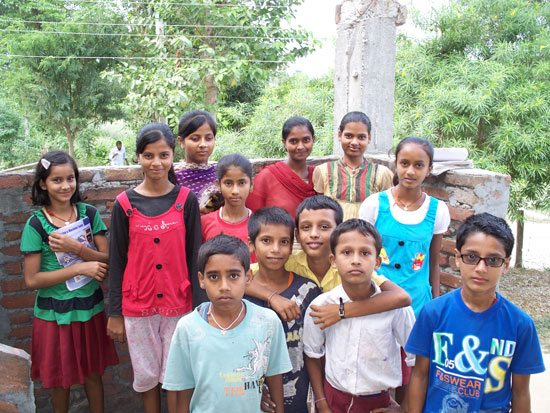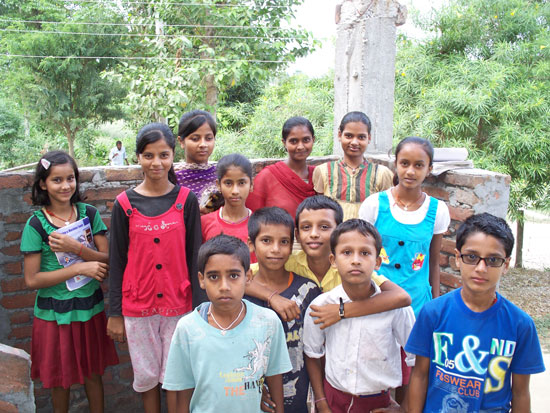Read more about Scott Harper’s trip to Nepal here.
Monday, 30th of September, 2013, 10:30 a.m.
This morning starkly contrasted with last night’s comfort. The weather was pleasant; you could sit without sweating and I got one of the best rests since being here. I woke up at 5:30 to similarly pleasant weather, but I felt sick. I thought maybe it was one of those feelings brought on by something else, like hunger, so I lay still, hoping it would go away, but my stomach wasn’t having it today. At least it was a beautiful morning. It would have been just that much more miserable if I had chosen a horribly hot and muggy day to get sick. The upside has been that, although I still feel tired, whether from the physical violence of vomiting or otherwise, the episode seems to have left as quickly as it came. Fingers crossed. I don’t know what brought it on, but coincidentally a student yesterday had told me that his stomach was not well. Anyhow, that is just speculation, and who knows if a bug would set in that fast and leave after only one incident. But I’m not convinced it was the food, either. I didn’t eat anything out of the ordinary yesterday.

One of my typical leisure spots, the bench outside my room at Eejot, reading Zen and the Art of Motorcycle
In the meantime, this morning while I prescriptively took leave from teaching and laid down, I finished ‘Zen and the Art of Motorcycle Maintenance’ by Robert Prisig, the book I’ve been absorbed in for the last few days. It sounds trite and borderline foolish to say I came to Nepal to do some philosophical soul searching, but Zen has definitely made me think. It certainly hasn’t all sunk in and will probably require a second read before I can make any real comments on the book, but it has made me contemplative either way. Being thrust deep into philosophy and values and questions about the nature of reality puts you in a state of mind that, ironically, removes you from the reality you’re thinking about. And then you realize that very fact as you emerge from inside your head, but the resulting shifted perspective stays for a while. Now, after having read this entry out loud, it seems like I’ve been poorly emulating Prisig’s writing style for the last several days and it annoys me.
Apart from this morning, the past week has been quite good. As I referenced earlier, the weather is steadily improving although the bugs aren’t. The only thing worse than a mosquito is a phantom mosquito, because they somehow distract you enough with phantom bites for the real ones to sneak up on you. I have several dozen bites despite being diligent about long pants, insect repellent, sleeping in a net, and general awareness. I’m glad I have been taking the daily malaria tablets.

The afternoon session
OK, back to my original train of thought. From the standpoint of testable learning objectives, I have made a zigzagged path across the computer’s organization, working through hard drives, folders, files, shortcuts and file addresses, to what it means to save a file, what a file extension is, and the File menu found in many programs.
But trying to determine relevant topics and then explaining them in a way that is useful to beginning computer users who don’t speak your language well, and range in age from 7 to 20, really isn’t the easiest thing to do. One of the biggest problems with the process of transferring a lot of this knowledge is that my whiteboard method isn’t organic at all. I have done a couple of demonstrations on a computer with the class gathered behind me to show some of what I am talking about, like Save vs. Save As, but other things aren’t so obvious, even with hands-on experience. With each computer different and an unfortunate mix of versions of Windows, it is hard enough to come up with generic instructions for how to go about a particular task, much less get the students to understand and follow said instructions.

Some of the younger
These last several thoughts have more to do with the structure of the developing course and the method of teaching than with the content itself. They raise important questions about what is the best way to actually teach. It becomes a function of student age and their varying levels of conceptual thinking, values about individuals vs. larger social groups, modes of teaching that the students are already used to, and many other factors. But after determining the proper pedagogical method, does that fit with the existing infrastructure and resources? What is the ideal balance between the total number of students who gain some experience with computers and the quality and usefulness of that experience to individuals? But if one can answer that question, your available methods are constrained again. Are the methods or the resources the independent variable? If neither, it becomes an iterative process of trial and error.
And now that I’ve removed myself from the immediate situation by asking a whole bunch of questions that can’t be answered until later, it seems best that I get back to the actual teaching, so I can collect more of the data needed to move Eejot forward.



